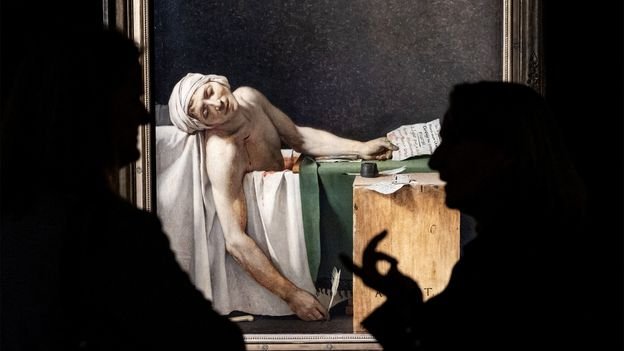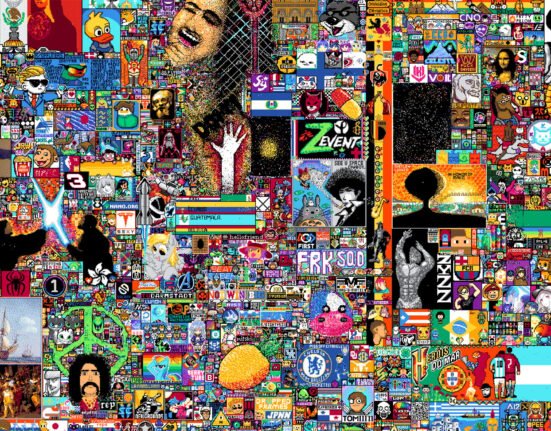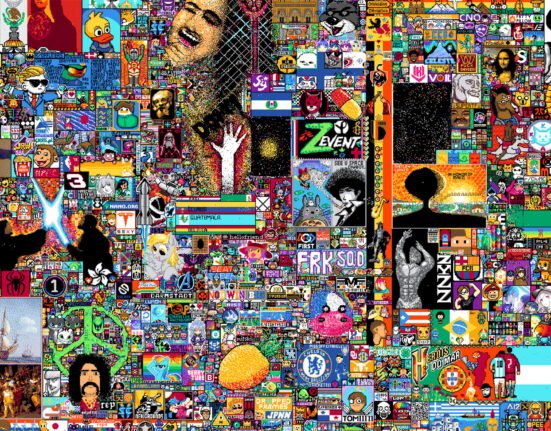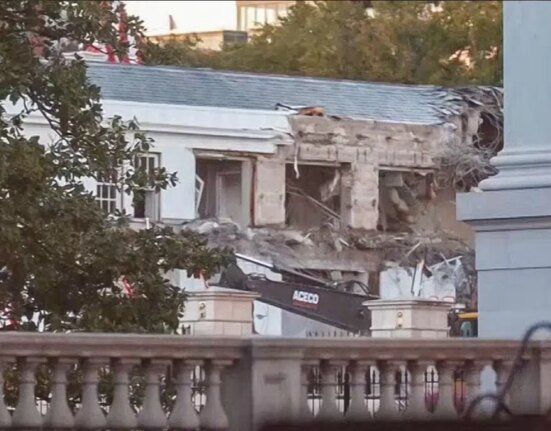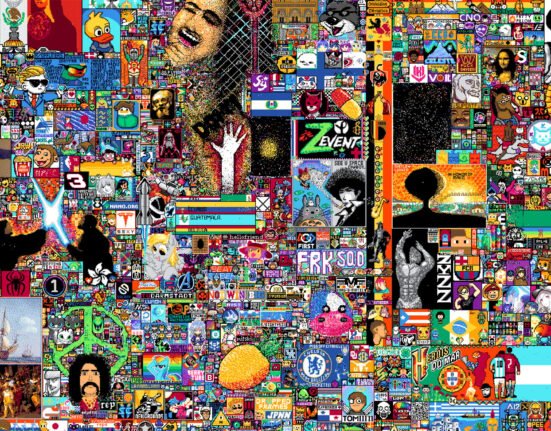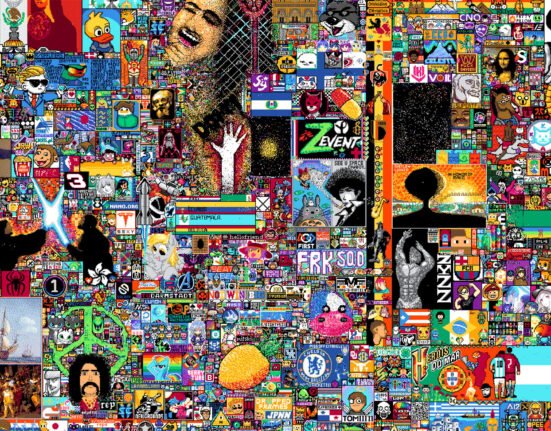Look closely below David’s signature and you will see a silent struggle not just between two different dates but between two contrary conceptions of time. Under his own name, David has chiselled “L’an deux”, denoting the second year of the Revolutionary Calendar which began in 1792, when the Republic was founded. That crisp and legible date sits between the prised apart and partially erased digits of the Christian calendar’s calibration for the year of the work’s creation: “1793”. In the bottom two corners of the box, David has inserted and scrubbed away “17” and “93”, indicating an utter abolition of Christian time in favour of revolutionary measurements.
Yet again, Marat may be making a rich allusion in his curious conflation of competing systems of time. Like Caravaggio, Botticelli too only signed one painting: his Mystic Nativity, into which he embeds a riddling inscription that brings into close adjacency the Christian calendar and an apocalyptic one that is synchronised to the Book of Revelations: “This picture, at the end of the year 1500, in the troubles of Italy, I, Alessandro, painted in the half-time after the time, according to the eleventh chapter of Saint John in the second woe of the Apocalypse…” In David’s Death of Marat, Botticelli is summoned and superseded as the priorities of revelation are usurped by those of revolution.
What, ultimately, does all this doubling add up to in David’s famous painting, a work that, by fusing passion with principle, would redefine the texture and intensity of history painting, and influence everything from Delacroix’s Raft of the Medusa to Picasso’s Guernica? By relentlessly refracting the evidence left at the scene of Marat’s murder through the dense prism of his imagination, David projects a double portrait. Before our eyes the artist transforms murder into myth as the physical body of the slain polemicist is alchemised into a mystical second figure we more feel than see. Marat the Messiah’s haunting presence disturbed the imagination of the French poet Baudelaire, who famously observed of the painting “in the cold air of this room, on these cold walls, around this cold and mournful bathtub, a soul hovers”.
Jacques-Louis David is at The Louvre in Paris until 26 Jan 2026
—
If you liked this story, sign up for The Essential List newsletter – a handpicked selection of features, videos and can’t-miss news, delivered to your inbox twice a week.
For more Culture stories from the BBC, follow us on Facebook and Instagram.

